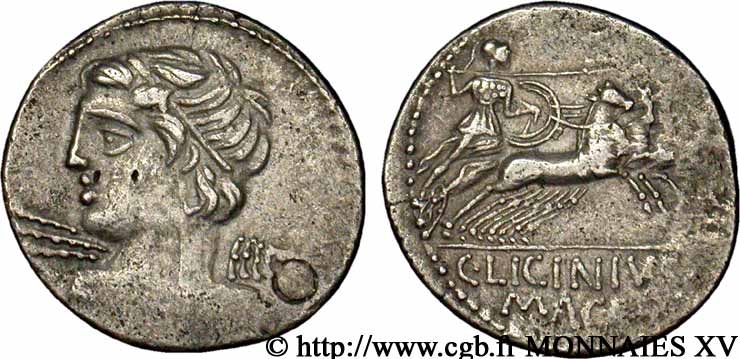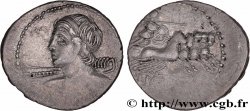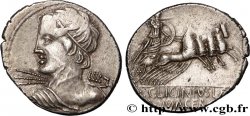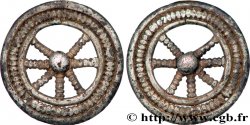v15_1480 - LICINIA Denier
MONNAIES 15 (2002)
Startpreis : 105.00 €
Schätzung : 180.00 €
Erzielter Preis : 105.00 €
Anzahl der Gebote : 1
Höchstgebot : 130.00 €
Startpreis : 105.00 €
Schätzung : 180.00 €
Erzielter Preis : 105.00 €
Anzahl der Gebote : 1
Höchstgebot : 130.00 €
Type : Denier
Datum: 85 AC.
Name der Münzstätte / Stadt : Roma
Metall : Silber
Der Feingehalt beträgt : + 950 ‰
Durchmesser : 20 mm
Stempelstellung : 3 h.
Gewicht : 3,95 g.
Kommentare zum Erhaltungszustand:
Portrait magnifique au droit. Décentré au revers avec un flan légèrement taché. Petite faiblesse de frappe à six heures au revers
N° im Nachschlagewerk :
Vorderseite
Titulatur der Vorderseite ANÉPIGRAPHE.
Beschreibung Vorderseite Buste héroïque et lauré d’Apollon Véjovis à gauche, vu de trois quarts en avant, brandissant un foudre de la main droite avec le manteau sur l’épaule.
Rückseite
Titulatur der Rückseite C. LICINIVS. L. F./ MACER EN DEUX LIGNES.
Beschreibung Rückseite Minerve dans un quadrige galopant à droite, brandissant une javeline transversale de la main droite et tenant les rênes et un bouclier de la main gauche.
Übersetzung der Rückseite “Caius Licinius Lucii Filius Macer”, (Caius Licinius fils de Lucius Macer).
Kommentare
Ce denier ne semble pas avoir été imité par les Gaulois d’une manière servile. Cependant, le droit peut être rapproché du bronze ambien (LT. 8399-8397). Le portrait d’Apollon n’est pas très éloigné de celui de la gens Calpurnia qui a été largement copié sur les monnaies gauloises. En examinant ce denier et en le comparant avec la série d’argent rème (LT. 7174-7191), une certaine homotypie de contiguïté peut exister. Le foudre et la main de Véjovis seraient interprétés comme les ailes de la victoire.
This denarius does not appear to have been imitated by the Gauls in a servile manner. However, the obverse can be compared to the bronze Ambien (LT. 8399-8397). The portrait of Apollo is not far removed from that of the gens Calpurnia, which was widely copied on Gallic coins. By examining this denarius and comparing it with the Remi silver series (LT. 7174-7191), a certain homotypy of contiguity may exist. The thunderbolt and the hand of Vejovis would be interpreted as the wings of victory
This denarius does not appear to have been imitated by the Gauls in a servile manner. However, the obverse can be compared to the bronze Ambien (LT. 8399-8397). The portrait of Apollo is not far removed from that of the gens Calpurnia, which was widely copied on Gallic coins. By examining this denarius and comparing it with the Remi silver series (LT. 7174-7191), a certain homotypy of contiguity may exist. The thunderbolt and the hand of Vejovis would be interpreted as the wings of victory








 Berichten über einen Fehler
Berichten über einen Fehler Die Seite drucken
Die Seite drucken Teilen meiner Auswahl
Teilen meiner Auswahl Stellen Sie eine Frage
Stellen Sie eine Frage Einlieferung/Verkauf
Einlieferung/Verkauf
 Details
Details











